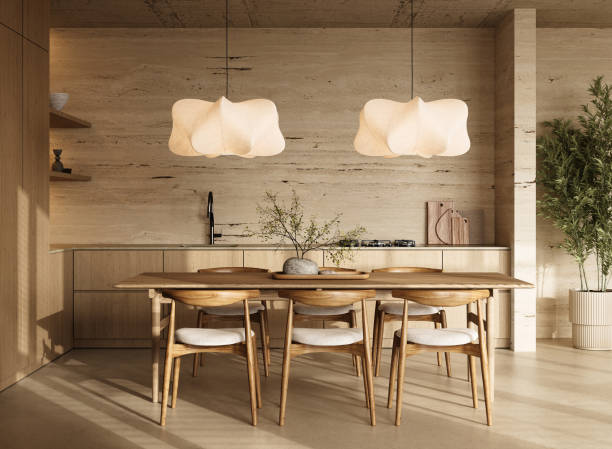Transform Your Space: Essential Home Renovation Trends and Techniques for 2025
Home renovation offers homeowners an opportunity to refresh their living spaces, balancing functionality and design. In 2025, the trend of enhancing property value through strategic renovations, such as kitchen and bathroom remodeling, is gaining popularity. Whether you're looking to create a cozy kitchen or a tranquil bathroom retreat, understanding home renovation can help you make informed decisions that enhance both the value and aesthetics of your home. Embrace the endless possibilities of home renovation and transform your home into a personal and welcoming haven.

Modern home renovation has shifted toward creating versatile, comfortable spaces that adapt to changing lifestyle needs. Whether you’re planning a complete overhaul or targeted updates, understanding current design trends and practical techniques ensures your investment delivers both immediate satisfaction and long-term value.
How to Design an Open-Plan Living Room and Dining Room
Open-plan layouts remain popular for their ability to create flowing, spacious environments that encourage interaction and flexibility. Start by defining distinct zones using furniture placement, area rugs, or lighting variations rather than physical barriers. Consider the traffic flow between spaces, ensuring clear pathways that don’t disrupt either the living or dining functions.
Choose a cohesive color palette that unifies both areas while allowing for subtle variations in accent pieces. Furniture selection plays a crucial role - select pieces that complement each other in scale and style. A large sectional sofa can anchor the living area, while a substantial dining table creates a natural boundary between spaces.
How Can I Decorate a Small House to Make It Look Bigger
Small spaces benefit from strategic design choices that create the illusion of expanded square footage. Light colors on walls and ceilings reflect natural light, making rooms appear larger and more open. Mirrors positioned opposite windows or light sources amplify brightness and create depth perception.
Vertical storage solutions draw the eye upward, emphasizing ceiling height rather than floor space limitations. Choose furniture with exposed legs to maintain visual flow underneath, and select pieces that serve multiple purposes. Built-in storage eliminates clutter while maintaining clean lines that contribute to a spacious feeling.
How to Choose a Home Decor Style That Suits You
Selecting an appropriate decor style requires honest assessment of your lifestyle, preferences, and practical needs. Consider how you use your space daily - do you entertain frequently, work from home, or prefer quiet relaxation? Your answers should guide style choices that support rather than complicate your routine.
Examine existing pieces you love and identify common elements like color preferences, material choices, or design periods. Create a mood board combining inspiration images, fabric samples, and color swatches to visualize how different elements work together. Remember that personal style often blends multiple influences rather than strictly adhering to one design category.
What Aspects Should Be Considered When Decorating in Scandinavian Style
Scandinavian design emphasizes functionality, simplicity, and connection to nature through material choices and color palettes. Focus on light, neutral colors with white as the primary base, accented by soft grays, warm beiges, and occasional muted blues or greens. Natural materials like light woods, wool textiles, and leather add warmth and texture.
Furniture should feature clean lines and practical design without unnecessary ornamentation. Incorporate plants and natural elements to bring life and color into the space. Lighting plays a crucial role - combine ambient, task, and accent lighting to create cozy atmospheres during darker months.
What Are the Characteristics of Modern Minimalist Home Decor
Minimalist design prioritizes essential elements while eliminating visual clutter and unnecessary decoration. Color schemes typically feature neutral tones with occasional bold accents used sparingly for impact. Furniture selections emphasize quality over quantity, with each piece serving a clear purpose and contributing to the overall aesthetic.
Storage solutions remain hidden or integrated seamlessly into the design to maintain clean surfaces and uncluttered spaces. Materials tend toward natural options like wood, stone, and metal, chosen for their inherent beauty rather than decorative treatments. Negative space becomes as important as furnished areas, creating breathing room that enhances the impact of selected elements.
| Service Type | Provider | Cost Estimation |
|---|---|---|
| Full Home Renovation | Major Contractors | $100,000 - $300,000+ |
| Kitchen Remodel | Specialized Kitchen Companies | $25,000 - $80,000 |
| Bathroom Renovation | Bathroom Specialists | $15,000 - $40,000 |
| Interior Design Consultation | Professional Designers | $100 - $300 per hour |
| Flooring Installation | Flooring Contractors | $3 - $15 per square foot |
Prices, rates, or cost estimates mentioned in this article are based on the latest available information but may change over time. Independent research is advised before making financial decisions.
Successful home renovation requires careful planning, realistic budgeting, and clear vision of your desired outcome. Whether implementing major structural changes or refreshing existing spaces with new decor approaches, focus on solutions that enhance your daily experience while reflecting personal style preferences. Consider professional consultation for complex projects, but remember that many decorative updates can be accomplished through thoughtful planning and gradual implementation of design principles that create lasting satisfaction with your transformed space.



